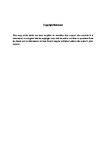Governance and Economic Development in the Arab Region: A Global Perspective
| dc.contributor.supervisor | Benhin, James | |
| dc.contributor.author | Abdelbary, Islam | |
| dc.contributor.other | Plymouth Business School | en_US |
| dc.date.accessioned | 2019-07-31T10:28:59Z | |
| dc.date.issued | 2019 | |
| dc.identifier | 10509948 | en_US |
| dc.identifier.uri | http://hdl.handle.net/10026.1/14724 | |
| dc.description.abstract |
The Arab region enjoys a strategic geographical location, an abundant natural resource base, a demographic gift of an expanding pool of young and educated labour force, and a dynamic and entrepreneurial population. Despite these, the region has been unable to achieve sustained and inclusive growth. This failure has strongly been attributed to igniting a wave of protests, popularly referred to as the ‘Arab Spring’, which spread throughout most of the region. Hence, the study aimed to identify the economic and especially institutional reasons that led to the Arab uprising by evaluating reform programmes that took place over the past two decades in the region. In order to achieve this objective, the study applied two stages of quantitative analysis on a panel of 78 countries, including 17 from the Arab region (categorised into four groups) over the period 1995 to 2014. Firstly, a comparative heuristic approach to examine the outcomes of economic, social and political reform in the Arab countries with those in other world regions. Secondly, an examination of these relationships by utilising an augmented neoclassical growth model framework derived from a production function and a dynamic panel LSDCV estimation, which incorporates aggregated reform indicators generated by principal component analysis (PCA). The outcomes prove that the Arab region had experienced a growth deficit, with low per capita income growth. This growth performance has been weaker than that achieved by most other regions of the world. Success in economic and social reforms have been disappointing, attributable mostly to the poor institutional environment, which includes, political instability and dictatorial rule, civil wars, lack of accountability and widespread governmental corruption. The econometric analysis supports this and suggests that in addition to improvements in the institutional environment, monetary and financial policy mechanisms should be activated, in addition to diversification of the economy to achieve growth. Based on these the thesis proposes frameworks that may lead to more comprehensive and integrated development in the Arab world, based on some key economic, political and social variables, and taking into consideration the distinctive features of each Arab group. These frameworks can be used as a vital tool to increase the effectiveness of reform programmes in meeting targeted inclusive growth outcomes. In conclusion, the study confirms that reform is simultaneously political, social and economic. Economic reform should not be seen in a vacuum, in isolation from political and social choices that society makes. Looking forward, the Arab reform agenda must address critical governance issues that hinder the effectiveness of reform policies. Better institutions will establish an incentive structure that reduces uncertainty and encourages efficiency, thereby contributing to sustained and inclusive growth. | en_US |
| dc.language.iso | en | |
| dc.publisher | University of Plymouth | |
| dc.subject | Arab Spring | en_US |
| dc.subject | Arab Countries | en_US |
| dc.subject | Reform | en_US |
| dc.subject | Institutions | en_US |
| dc.subject | Panel Analysis | en_US |
| dc.subject.classification | PhD | en_US |
| dc.title | Governance and Economic Development in the Arab Region: A Global Perspective | en_US |
| dc.type | Thesis | |
| plymouth.version | publishable | en_US |
| dc.identifier.doi | http://dx.doi.org/10.24382/977 | |
| dc.identifier.doi | http://dx.doi.org/10.24382/977 | |
| dc.rights.embargodate | 2020-07-31T10:28:59Z | |
| dc.rights.embargoperiod | 12 months | en_US |
| dc.type.qualification | Doctorate | en_US |
| rioxxterms.version | NA | |
| plymouth.orcid.id | 0000-0003-1727-9071 | en_US |
Files in this item
This item appears in the following Collection(s)
-
01 Research Theses Main Collection
Research Theses Main


